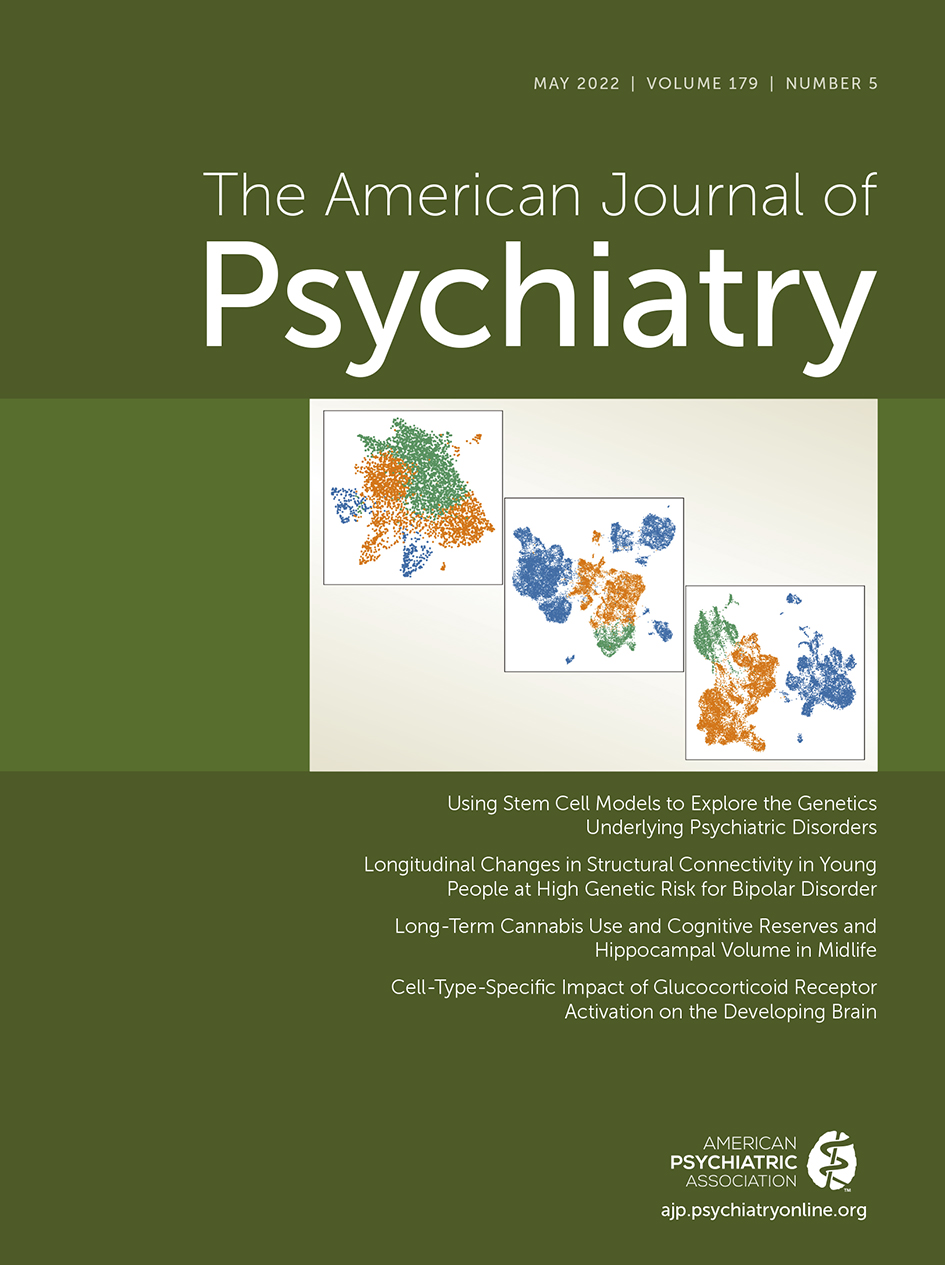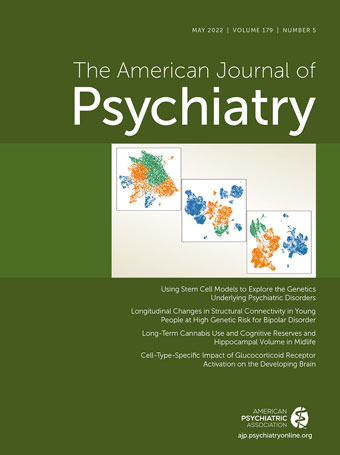Cannabis is the third most widely used psychoactive substance after alcohol and tobacco. Although it is commonly perceived to be a relatively safe substance, the health risks of cannabis use remain poorly understood. Historical drug policies that criminalized cannabis users have made it difficult for researchers to study the impact of cannabis on health outcomes. One of the most important upshots of the legal regulation of alcohol and tobacco has been the development of standardized consumption units and measures, which are reliably used in research, clinical practice, and regulatory policies to quantify addictive behaviors and drug exposure. The lack of such standardized units for cannabis consumption is one reason why the scientific literature on cannabis and brain health is laden with inconsistent and marginal effects (
1).
Establishing causality in science involves multiple levels of investigation and for which no single study can claim definitive proof. Only a body of literature, when considered systematically and comprehensively, can point to a causal relationship between two complex phenomena such as chronic cannabis use and brain health. Meier et al. (
2) provide a convincing set of findings indicating a robust relationship between persistent and heavy cannabis use and impaired cognitive functioning. This study offers a significant contribution by evaluating the magnitude of the relationship between cannabis and cognitive functioning and shows that the cannabis-cognition link, albeit subtle from the perspective of middle adulthood years, compares to that reported for adolescent cannabis users (
3), particularly in the sense that cannabis was shown to have a specific and potentially greater impact on cognitive functioning than alcohol and tobacco.
However, like other studies (
4), a unique structural brain correlate of heavy cannabis use was not revealed. Instead, reduced hippocampal volume was shown to be associated with all substance use profiles, which was similarly demonstrated by a meta-analysis of 14 addiction-neuroimaging studies reprocessed and pooled through the ENIGMA-Addiction project (
4). In fact, reduced hippocampal volume appears to be one of the most consistent findings across the ENIGMA Consortium studies comparing individuals with psychiatric conditions to age- and sex-matched control subjects (
4). However, this general neural marker of psychopathology has yet to be fully understood and warrants further attention considering a growing body of literature revealing the importance of the general psychopathology factor (P-factor [
5]) across most psychiatric conditions. With respect to the current study, the relationships between cannabis and cognition were significant across a variety of cognitive domains, suggesting a whole brain approach, potentially focusing on functional brain connectivity, might be a more promising avenue for identifying cannabis-specific brain correlates.
In light of these nonsignificant neuroimaging findings, a more important contribution of the current study was its focus on potential unmeasured confounding variables. Much like how we have transitioned to reporting standardized effect sizes, our field should pay more attention to the size of unmeasured confounding variables to better guide future studies. Why is the confounder effect so important? The authors demonstrate that across different measurement methods, persistent and heavy cannabis use is associated with a decline in cognitive functioning, relative to pre-adolescent cognitive functioning. These findings could reflect neurotoxic effects of cannabis on adolescent brain development or early adult brain degeneration. The finding that cannabis quitters also showed marginal cognitive decline further supports this conclusion and parallels findings from studies with adolescents, showing lasting effects of cannabis use on cognitive development (
3). However, the authors also rightfully address the possibility of potential unmeasured confounders, which, if identified, would have to increase the average rate of cognitive decline by approximately 50% in order to be a viable third variable explanation, according to the RUC analysis. The authors wisely include important covariates in their reported analyses, such as childhood socioeconomic status, childhood temperament, and familial history of substance misuse. To build on these significant findings, we now have more clarity of the knowledge gap and its magnitude.
Two unmeasured and potentially relevant confounders were internalizing symptoms and educational attainment. According to a recent meta-analysis, the risk of developing depression is 1.37 greater for adolescents who used cannabis before the age of 18 years (
6), and the cognitive consequences of major depression are well documented (
7). With respect to academic achievement, a previously published longitudinal cohort, comparable to the Dunedin study in length of follow-up and rigor, showed that early onset cannabis use satisfied many conditions for causality in the pathway to adult substance use disorder (
8).
The potential long-term consequences of early onset cannabis use on academic achievement (whether attributed to the direct effects of cannabis-related neurotoxicity or the indirect effects of school disciplinary actions) should not be underestimated considering the demonstrated association between educational attainment and cognitive functioning during early adulthood (
8). According to one large study, an additional 5 years of education (the difference between a high school and university education) is associated with a difference of 0.2–0.4 standard deviations in cognitive performance (3–6 IQ points). Independent of an individual’s childhood educational attainment, middle age educational and occupational attainment are associated with better brain health, including functional network organization and anatomy (
9). While educational attainment is less implicated in the type of cognitive decline that occurs in the later decades of life (60–80 years [
8]), the size of the effect on midlife is worthy of consideration and appears of a magnitude that could explain the relationship between cannabis and midlife cognitive decline.
School suspension and police involvement are common disciplinary actions for youth cannabis use, which have secondary effects that persist into adulthood, impacting on future educational and employment status and achievements (
10). Policies that marginalize or disadvantage cannabis users could potentially decrease the likelihood that cannabis users pursue higher educational and employment opportunities, which in turn are known to enhance cognitive development and protect against premature cognitive decline (
9). However, few developmental cohorts have been designed to be able to study the impact of drug policies and interventions on brain health.
With more jurisdictions adopting more liberal policies toward cannabis, longstanding and unresolved questions on causality can be more comprehensively studied, for which more rigorous measures can be used, and comparisons can be made to jurisdictions with more protective or stigmatizing drug policies and practices. It is fair to say that the Dunedin study, with its outstanding retention rates, and rich and systematic assessment framework, has been at the forefront in exposing the potential health consequences of cannabis. If sustained, this study will continue to provide one of the most comprehensive investigations of the long-term effects of cannabis exposure on mental and brain health throughout the lifespan. In acknowledging the accomplishments of this far-reaching cohort study as it shifts its focus to the later stages of the life cycle, it is also time to recognize the need for a new wave of developmental cohort studies that are better designed to examine the impact of different health and drug policies on long-term mental and brain health outcomes, including inequities around such outcomes (
11,
12). Our next challenge calls for similarly rigorous longitudinal studies conducted across jurisdictions that necessarily diverge in cultural and political attitudes toward addictive behaviors so that we can begin to understand how the governance of addictive substances contributes to their safe management, or harm.

